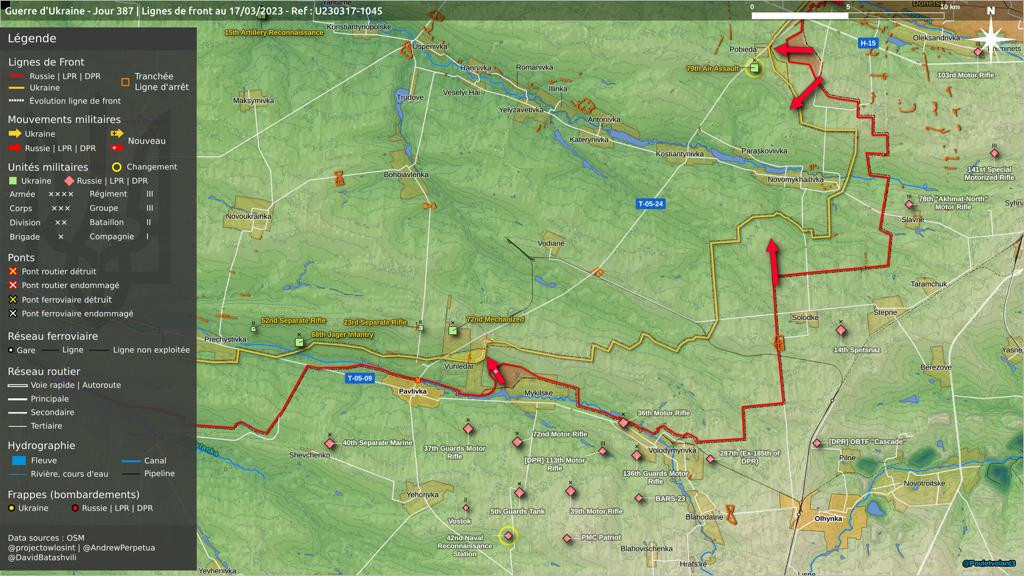
We have no plans to withdraw from Vuhledar - military expert Serhiy Zgurets
On the contrary, we are prepared for the enemy to become active again in this direction, as their goal remains unchanged - to regroup and try to break through to the Kurakhove - Pokrovsk - Kostiantynivka line.
Let's focus on the situation near Vuhledar
Initially, I tried to compare this section of the front to Chornobayivka, but I realized that it was a mistake. This particular direction has its unique features, primarily due to the courage, stability, and skill of our soldiers. It is the section of our defense where the enemy suffered the biggest tank battle, as described in emotional foreign publications. It is the location where the personnel of the 155th Marine Brigade of the Russian Federation were repeatedly destroyed, where the Alga volunteer battalion from Tatarstan vanished in battle, and where the Eastern Military District Commander, General-Colonel Rustam Muradov, incurred colossal losses.

We're discussing Vuhledar and its surrounding areas. Currently, it appears less active after an extremely intense period, but we expect the enemy to become active again soon. Their plan remains unchanged - to regroup and try to break through the line of Kurakhove-Pokrovsk-Kostiantynivka while pushing Ukrainian troops deep into the territory, away from the currently occupied south's transport routes. Vuhledar has one of the shortest routes to the coast of the Sea of Azov, so we won't retreat but instead advance. However, this is still just my guess. We'll learn more details from our soldiers fighting in Vuhledar, or as the General Staff now calls it, Shakhtarsk direction.
According to Oleksandr Voitko, a serviceman of the Armed Forces of Ukraine, his unit regularly performs tasks in the area. The fighting has continued for a long time but has become less large-scale. The Russians have switched to attacking individual positions around the city with armored vehicles and infantry support. Such attacks continue on individual positions of the Armed Forces. However, compared to previous attacks, these are less large-scale.
Voitko explained that the success of defending Vuhledar lies in the natural factor - its location on heights with well-visible approaches. But the main feature of the successful defense is the heroism and skills of Ukrainian soldiers, with a well-organized defense system and a successful plan. During the first massive enemy assaults, columns were detected in time, artillery made a fire impression on the enemy, and minefields were correctly located, causing significant damage to the enemy's equipment. The heroism of infantry units, particularly the 72nd brigade, played a crucial role in the defense. Despite some armored vehicles of the Russian occupiers breaking through to our positions, we held our ground, with many armored vehicles destroyed from anti-tank grenade launchers and other means. There were even battles reminiscent of those in World War ІІ movies, with our infantry displaying incredible endurance and heroism.
A Ukrainian Armed Forces serviceman observed that the enemy's capacity for effective demining is insufficient, as evidenced by their failed assaults on Vuhledar. Our successfully organized defense system has caused a significant number of Russian equipment losses due to minefields. Enemy attack aircraft occasionally target us but mostly do so from a distance without precise aim. Their planes launch missile strikes on our positions, and they use some drones, but their quantity is not significant enough to pose a significant threat. However, the enemy is developing more reconnaissance drones.
Oleksandr added that the enemy still has a sufficient number of forces in the area, despite shortages in manpower and equipment. The 155th and 40th marine brigades, which were the main offensive forces of the Russian occupation, were completely destroyed during the assault on Vuhledar. There have been instances where sailors from the Pacific Fleet of the Russian Federation were captured, rather than regular marines. These sailors were removed from their ships and sent to replenish the brigades. Nonetheless, the enemy still possesses a significant amount of both manpower and equipment, even without reserves in this area.
The fighter concluded that there are two possible scenarios for the enemy's further actions: they may either calm down and limit their attacks, or they may attempt to attack Vuhledar again, perhaps with the involvement of reserves. The Armed Forces are prepared for all eventualities and have demonstrated to the enemy the consequences of their assaults.
Cooperation between Ukraine and Poland: the Oncilla APC
There is increasing news of Western partners providing Ukraine with new models of tanks and infantry fighting vehicles, including the Leopard, Challenger, and Bradley. Recently, France has announced that it will transfer SAMP/T air defense systems with anti-missile capabilities and more ammunition to Ukraine. However, amidst these developments, it is essential to highlight the supply of Ukrainian-made weapons and equipment to the Ukrainian army or joint projects involving Ukraine.
One such example is the Oncilla armored personnel carrier, which was recently acquired by the GUR units of the Ukrainian Ministry of Defense. Developed for military purposes, the vehicle is an effective result of cooperation between Ukrainian and Polish gunsmiths. According to Oleksandr Leshchenko, deputy director of the Beryl Design Bureau, 31 units have already been delivered to the Ukrainian army, and they are successfully performing combat tasks in the war against Russia. Users have provided positive feedback, noting the vehicle's high passability in off-road conditions, sufficient firepower, and a security level equivalent to the second level of the NATO standard.
In addition, the Oncilla armored personnel carrier features reliable transmission and automation of control processes. Drivers can switch the transfer case on and off with one key, and the machine's tire pressure can be automatically managed. Operators can control and monitor the operation of nodes and aggregates through the digital front panel. The vehicle is equipped with a remotely controlled combat module resulting from the collaboration of Ukrainian and Polish developers. A thermal imaging camera and night surveillance device enable effective use in conditions of poor visibility or at night with the lights turned off.
Leshchenko added that the Oncilla has its roots in the Ukrainian Dozor armored personnel carrier but has been refined and redesigned. Currently, the vehicle is manufactured at the facilities of the Polish company Mista, and the Beryl Design Bureau is the official representative of the project in Ukraine and is responsible for providing technical and technological support for the Oncilla. The development of a new combat module for a 14.5 mm machine gun has been completed, and Beryl is currently working on establishing production facilities for the vehicle and combat modules within Ukraine. Additionally, a base for the repair, maintenance, and overall life cycle support of this vehicle is also being established in Ukraine.
- News










































